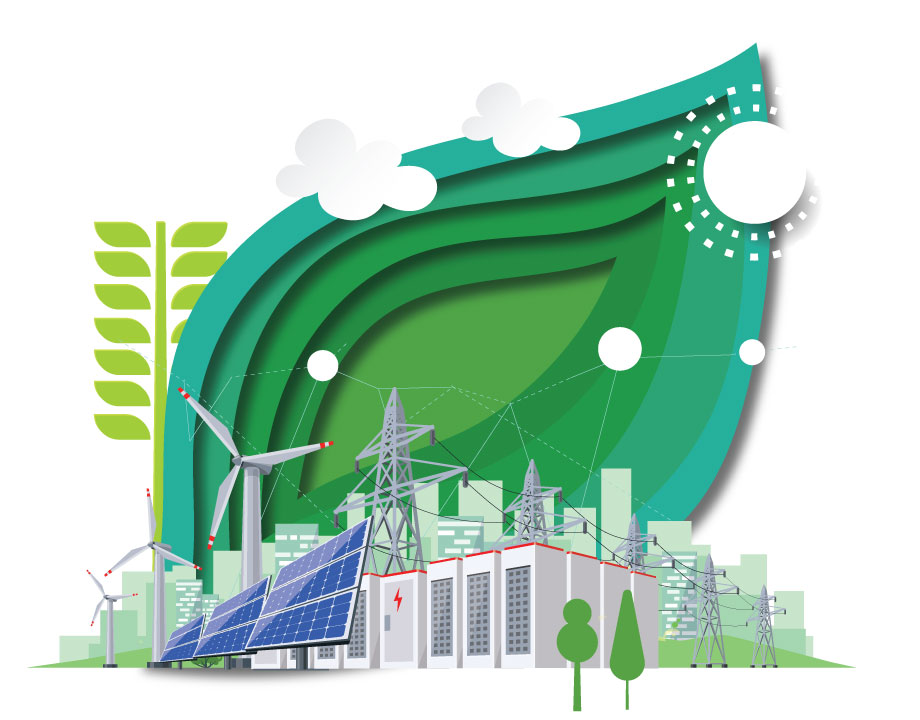Energy Blog: Lots of Research, but Economics Impede Hydrogen Development
Energy Blog: Lots of Research, but Economics Impede Hydrogen Development


Hydrogen will play an important role in the quest to decarbonize. Research abounds, but economics and the supply chain still must be surmounted for it to be an effective player.
There’s a lot of talk about hydrogen in the global quest to decarbonize, but inflation and slow financial commitments are standing in the way of developing new projects. A recent report from the International Energy Agency claims the number of announced projects for low-emissions hydrogen is fast expanding, but installed capacity and volume remains low as developers wait for government support.
A global energy crises, high inflation, and supply chain disruptions are gumming up the work, noted IEA. Inflation and expensive borrowing costs affect the entire value chain, driving up development costs and reducing the impact of government support. It hits hydrogen particularly hard because of high upfront costs for equipment manufacturing, construction, and installation.
"We have seen incredible momentum behind low-emissions hydrogen projects in recent years, which could have an important role to play in energy-intensive sectors such as chemicals, refining and steel,” said IEA Executive Director Fatih Birol about the report. “But a challenging economic environment will now test the resolve of hydrogen developers and policymakers to follow through on planned projects. Greater progress is needed on technology, regulation and demand creation to ensure low-emissions hydrogen can realize its full potential.”
Become a Member: How to Join ASME
Research, however, remains robust. Korean researchers, for instance, have achieved what they call a “significant” breakthrough in development of a hybrid silicon photocatalyst that uses solar power to efficiently produce hydrogen and high-value compounds. The researchers said the photocatalyst is nontoxic and ecofriendly, a significant development in the quest to produce cost-effective green hydrogen.
Others also reported promising results of catalytic development. Researchers in Hong Kong and the U.K. announced their work in developing a catalyst with only small amounts of platinum, which they say “can be cheaply scaled for mass use.”
Hydrogen is commonly produced through electrolysis, and platinum is commonly used in the reaction. Reducing the amount would reduce costs, as well as alleviating a potential supply chain problem.
"Hydrogen generated by electrocatalytic water splitting is regarded as one of the most promising clean energies for replacing fossil fuels in the near future, reducing environmental pollution and the greenhouse effect,” said lead researcher Professor Zhang Hua from City University.
More for You: Equipment OEMs Continue Hydrogen, Electric Pursuits
In Japan, a consortium of firms is moving on a design for a ship fitted with a two-stroke, liquified-hydrogen-fueld engine. They claim it will be the first demonstration of the technology when it shoves off in 2027.
Hydrogen’s role as a fuel for shipping is questionable because it is thought to be too expensive and complex for that task. Hydrogen is used to make ammonia and methane, two substances touted as better alternatives for low-carbon shipping fuels. Exmar LPG already has announced its intent to move on ammonia-powered ships, and Maersk will accept methanol-fueled vessels next year.
The Japanese project includes a J-ENG-built liquified hydrogen engine and a Kawasaki fuel-supply system installed on a Mitsue vessel. Costs have not been revealed, but the firms are betting against accepted throughts on the fuel. Liquid hydrogen must be stored below -253˚ C, a difficult task at sea. It also has poor energy density, requiring, at least at this time, very large storage tanks. Tackling that problem successfully would go a long way to making hydrogen an acceptable alternative shipping fuel.
Another obstacle to hydrogen’s usage, this time in fueling vehicles, is the cost in operating compressors that are needed to meet standards of pressure and purity. “The current cost of hydrogen is mostly driven by the expense of compressing and delivering it,” said Travis Williams, a professor of chemistry at the University of Southern California, in a school release. “The cost of running the compressor ends up being almost equal to the cost of the hydrogen itself for cars, which contributes to some of the affordability problems we’re seeing in hydrogen production today."
Williams and his team have developed a reactor to simplify and cost-effectively transport hydrogen in liquid as formic acid. It can be transported to a location and then converted back into hydrogen. Williams said the reactor operates effectively at high pressure, and the chemical reaction provides enough energy for self-pressurization, eliminating the need for expensive compressors.
Williams’ work was recognized by the Department of Energy in 2022 as one of the five pivotal achievements in recent research on the fuel. How fast such technologies become further developed will be key toward hydrogen’s anticipated role in reducing greenhouse gas emissions.
John Kosowatz is senior editor.
A global energy crises, high inflation, and supply chain disruptions are gumming up the work, noted IEA. Inflation and expensive borrowing costs affect the entire value chain, driving up development costs and reducing the impact of government support. It hits hydrogen particularly hard because of high upfront costs for equipment manufacturing, construction, and installation.
"We have seen incredible momentum behind low-emissions hydrogen projects in recent years, which could have an important role to play in energy-intensive sectors such as chemicals, refining and steel,” said IEA Executive Director Fatih Birol about the report. “But a challenging economic environment will now test the resolve of hydrogen developers and policymakers to follow through on planned projects. Greater progress is needed on technology, regulation and demand creation to ensure low-emissions hydrogen can realize its full potential.”
Become a Member: How to Join ASME
Research, however, remains robust. Korean researchers, for instance, have achieved what they call a “significant” breakthrough in development of a hybrid silicon photocatalyst that uses solar power to efficiently produce hydrogen and high-value compounds. The researchers said the photocatalyst is nontoxic and ecofriendly, a significant development in the quest to produce cost-effective green hydrogen.
Others also reported promising results of catalytic development. Researchers in Hong Kong and the U.K. announced their work in developing a catalyst with only small amounts of platinum, which they say “can be cheaply scaled for mass use.”
Hydrogen is commonly produced through electrolysis, and platinum is commonly used in the reaction. Reducing the amount would reduce costs, as well as alleviating a potential supply chain problem.
"Hydrogen generated by electrocatalytic water splitting is regarded as one of the most promising clean energies for replacing fossil fuels in the near future, reducing environmental pollution and the greenhouse effect,” said lead researcher Professor Zhang Hua from City University.
More for You: Equipment OEMs Continue Hydrogen, Electric Pursuits
In Japan, a consortium of firms is moving on a design for a ship fitted with a two-stroke, liquified-hydrogen-fueld engine. They claim it will be the first demonstration of the technology when it shoves off in 2027.
Hydrogen’s role as a fuel for shipping is questionable because it is thought to be too expensive and complex for that task. Hydrogen is used to make ammonia and methane, two substances touted as better alternatives for low-carbon shipping fuels. Exmar LPG already has announced its intent to move on ammonia-powered ships, and Maersk will accept methanol-fueled vessels next year.
The Japanese project includes a J-ENG-built liquified hydrogen engine and a Kawasaki fuel-supply system installed on a Mitsue vessel. Costs have not been revealed, but the firms are betting against accepted throughts on the fuel. Liquid hydrogen must be stored below -253˚ C, a difficult task at sea. It also has poor energy density, requiring, at least at this time, very large storage tanks. Tackling that problem successfully would go a long way to making hydrogen an acceptable alternative shipping fuel.
Another obstacle to hydrogen’s usage, this time in fueling vehicles, is the cost in operating compressors that are needed to meet standards of pressure and purity. “The current cost of hydrogen is mostly driven by the expense of compressing and delivering it,” said Travis Williams, a professor of chemistry at the University of Southern California, in a school release. “The cost of running the compressor ends up being almost equal to the cost of the hydrogen itself for cars, which contributes to some of the affordability problems we’re seeing in hydrogen production today."
Williams and his team have developed a reactor to simplify and cost-effectively transport hydrogen in liquid as formic acid. It can be transported to a location and then converted back into hydrogen. Williams said the reactor operates effectively at high pressure, and the chemical reaction provides enough energy for self-pressurization, eliminating the need for expensive compressors.
Williams’ work was recognized by the Department of Energy in 2022 as one of the five pivotal achievements in recent research on the fuel. How fast such technologies become further developed will be key toward hydrogen’s anticipated role in reducing greenhouse gas emissions.
John Kosowatz is senior editor.



